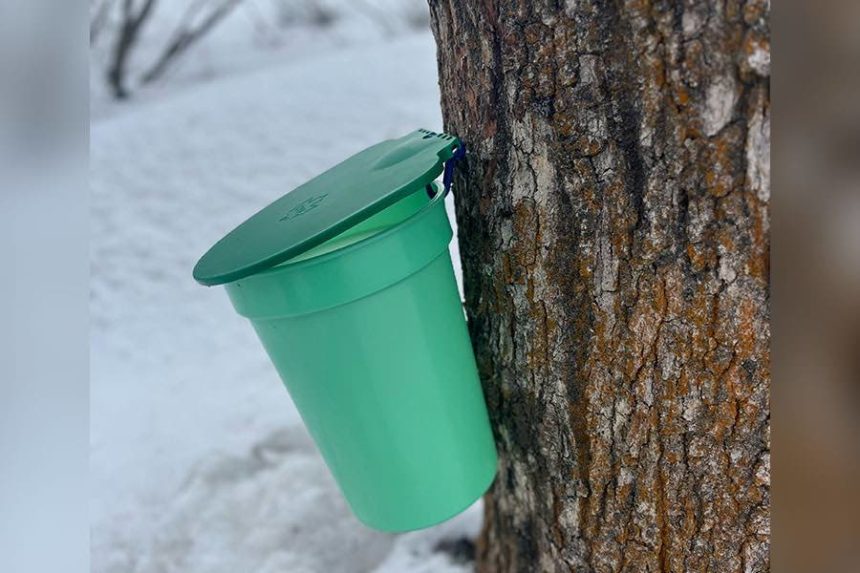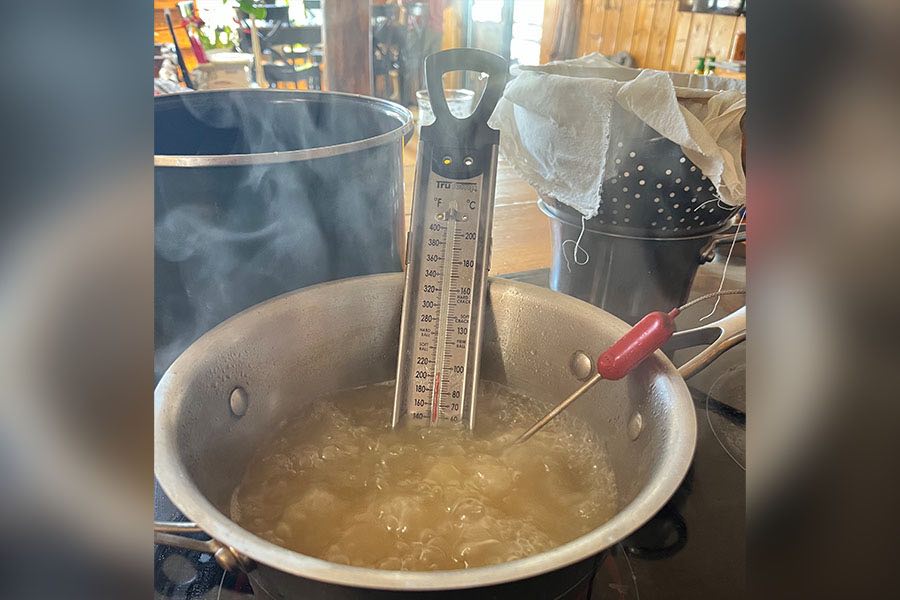Idaho maple syrup: Yes, you can make it and here’s how
Published at
I’ve always liked the idea of producing my own maple syrup. However, sugar maples (Acer saccharum) don’t grow in our high-pH soils.
I was intrigued several years ago to discover a long-forgotten spile and collection jar by a native big-tooth or canyon maple (Acer grandidentatum) near my home. I was excited to find out that big-tooth maple, the same common native maple that gives our hills and canyons vibrant fall colors, is a close relative to sugar maple.
For nostalgic nuts like me, producing maple syrup isn’t about efficiency. It’s about the process and the distinction of being able to say, “I made this myself.”
I’ve learned in the years since my forgotten spile discovery that maple syrup production is possible in Idaho. You can produce maple syrup right in your own backyard with just a few simple supplies.
It’s not only big-tooth maple that can be used to make syrup. You can also use Norway maple (Acer platanoides), silver maple (Acer saccharinum) and even boxelder, otherwise known as Manitoba maple (Acer negundo). Any maple can be used to create syrup. You just need to collect the sap.
What you need to collect sap:
- Dormant maple tree(s) at least eight inches in diameter.
- Spiles (taps) and a collection bucket or bag. An online search is the easiest way to find supplies.
- Hammer, cordless drill and a 5/16 or 7/16 bit. The bit size depends on the size of the tap you buy.
- Temperatures that fluctuate below freezing at night to above freezing during the day — about 40 degrees to 25 degrees Fahrenheit.
The timing of sap collecting season will vary from one locale to another, around late February or March. My experience is that sap flow starts just before snow melts off where the trees are located.
When conditions are right, drill a hole in the tree, about one and a half to two inches deep. Insert the tap into the hole and seat it by tapping it with a hammer. The sap will flow out of the tap and into your collection bucket during the day, stopping when temperatures drop. The flow will begin the next day with a temperature rise. This will repeat each day/night cycle with the right swing in temperature.
Once leaf buds start breaking, the flavor of the sap becomes unpleasant and signals the end of sap collection. Simply remove the tap. The tree will seal off the hole during the summer growing season.
Once you collect sap, you must concentrate the sugar that naturally occurs in maple sap. While trees will vary, most sap starts with about 2 percent sugar content. Pure maple syrup needs to be 67 percent sugar. This equates to roughly 40 gallons of sap to produce 1 gallon of syrup.

To concentrate the sugars, boil your sap on an outdoor cooker in a large pot. The sugars (and other minerals) are left behind as water evaporates. A shallow, fast boil while slowly adding more sap is better than trying to heat an entire pot. Try to maintain the sap boiling between two and four inches deep.
Once the liquid reaches seven degrees above the boiling point of water (as measured on a candy thermometer), your sap has reached about 67 percent sugar concentration. You now have pure maple syrup!
Often, late winter could be termed a recreational doldrum. There’s much more involved in making quality maple syrup, but the basics described here will get you started. A good resource providing a little more detail is South Dakota State Extension.
Give maple tapping a try. Who knows, you may find yourself starting a new family tradition.

In the Garden is sponsored by ProPeat, which is dedicated to delivering solutions for any of your professional fertilization needs. Whether you need to reduce the harm to soils and the environment, or you're interested in the latest nitrogen, carbon and biochemical technologies, ProPeat is the perfect fit.
